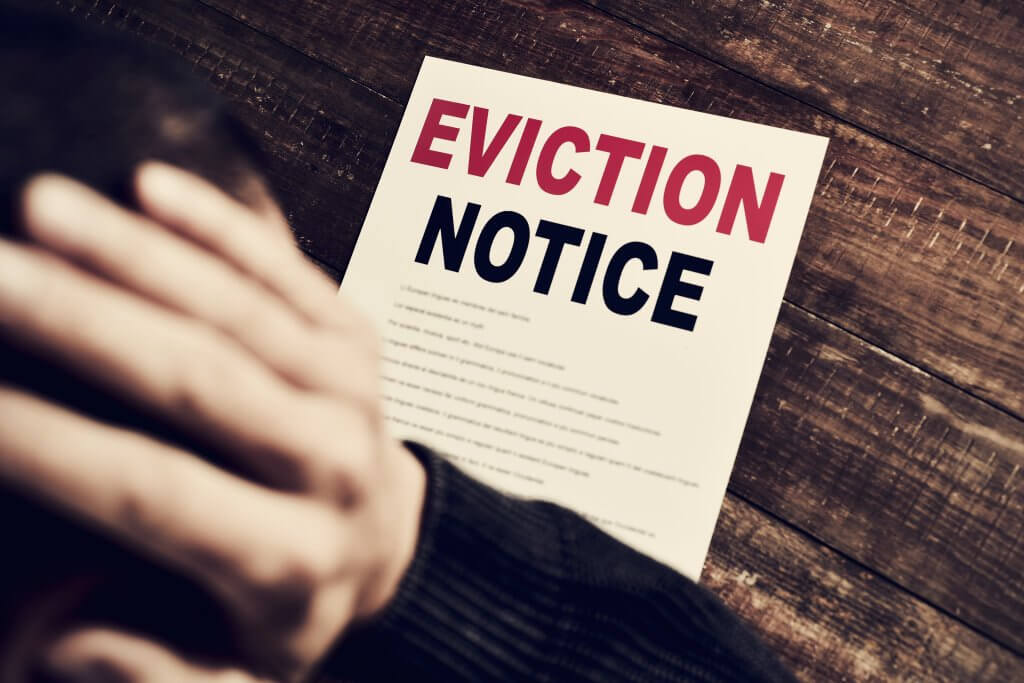Here’s What’s Happening With Eviction Protections and Rent Relief in Maryland

There are roughly 129,000 households behind on rent in Maryland, according to the National Equity Atlas, and although the state has received hundreds of millions in rent relief, that funding has been slow to get to tenants as emergency protections expire.
Here’s what you need to know about rental assistance and emergency renter protections in Maryland.
When will emergency protections for tenants expire?
Emergency tenant protections from the Centers for Disease Control (CDC) expired at the end of July, and similar protections from Gov. Lawrence J. Hogan Jr. (R) are set to phase out on Aug. 15. Fair housing advocates have long cautioned against characterizing those emergency protections as “moratoriums,” because they only provide tenants with an affirmative defense to avert certain types of eviction cases, including failure-to-pay rent.
Under both of those orders, tenants could use a substantial pandemic-related income loss as a means to delay an eviction.
Leaders from some of the state’s largest jurisdictions and a coalition of fair housing advocates previously asked Hogan to institute a 90-120 day moratorium on all evictions, but no such moratorium has been put in place so far.
What happens once those orders expire?
During the pandemic, Maryland courts have been reserving judgements in eviction cases where tenants successfully raise the state or CDC emergency protection defenses.
Judges have issued roughly 4,500 reserved judgements for failure-to-pay rent cases, Maryland District Court Chief Judge John P. Morrissey told members of the House Environment and Transportation Committee at a hearing last week.
With the expiration of the CDC order and when Hogan’s order expires, landlords will be able to submit a “petition for warrant of restitution” and affirm under oath that a tenant hasn’t paid rent, requiring payment of any reserved judgment.
Fair housing advocates previously urged courts to change that procedure, and warned that tenants “may be facing eviction with little-or-no notice and no meaningful opportunity to dispute the landlord’s assertion that they still owe rent.”
Courts have been accepting eviction filings throughout the pandemic, although Morrissey said the judiciary is still moving at a slower pace than before the pandemic.
Aaron Greenfield, the director of government affairs at the Maryland Multi-Housing Association, said in a statement that the time between eviction filings and hearings has increased “exponentially” since the onset of the pandemic, by up to nine months in some jurisdictions.
What kind of emergency assistance is available for tenants?
State and local governments in Maryland have received hundreds of millions in rental assistance since the beginning of the pandemic, including more than $400 million as part of the Consolidated Appropriations Act’s Emergency Rental Assistance (ERAP1) program, but that relief funding has been slow in getting to tenants.
The state’s eight largest local jurisdictions received a combined $143,498,208 million in ERAP1 funding directly from the U.S. Treasury. The Maryland Department of Housing and Community Development received nearly $193 million to distribute to local jurisdictions statewide as part of ERAP1, $40 million for its Assisted Housing Relief Program, $20 million for rental assistance reserve funding and roughly $5.1 million for administrative and outreach costs.
But much of that funding is languishing while courts reopen: According to DHCD testimony at a legislative briefing last week, Maryland counties have so far distributed about $38.54 million in ERAP funding to 5,458 households statewide, although that figure doesn’t account for other local and nonprofit rent relief efforts. It also doesn’t account for counties’ use of other relief funding streams, like Community Development Block Grants. The state has so far distributed $10.67 million to 2,776 households.
Local jurisdictions have taken a varied approach to administering rent relief programs: In Baltimore County, officials partnered with the United Way of Central Maryland to create the Strategic Targeted Eviction Prevention (STEP) program, which partners with landlords to bundle large numbers of eligible tenants together to quickly administer rent relief funding. United Way has since expanded that program to include Baltimore City and Harford and Howard counties.
Greenfield said MMHA advocated for a bundled approach like United Way’s STEP program, but said the fast distribution of rent relief funding will be key for both landlords and tenants.
“While housing providers will continue to ensure that residents have complete access to those funds, it is imperative that local governments efficiently disburse this rental relief to ensure a robust and healthy housing industry for housing providers and residents alike.”
A full list of local and state rent relief programs can be found here.




 Creative Commons Attribution
Creative Commons Attribution